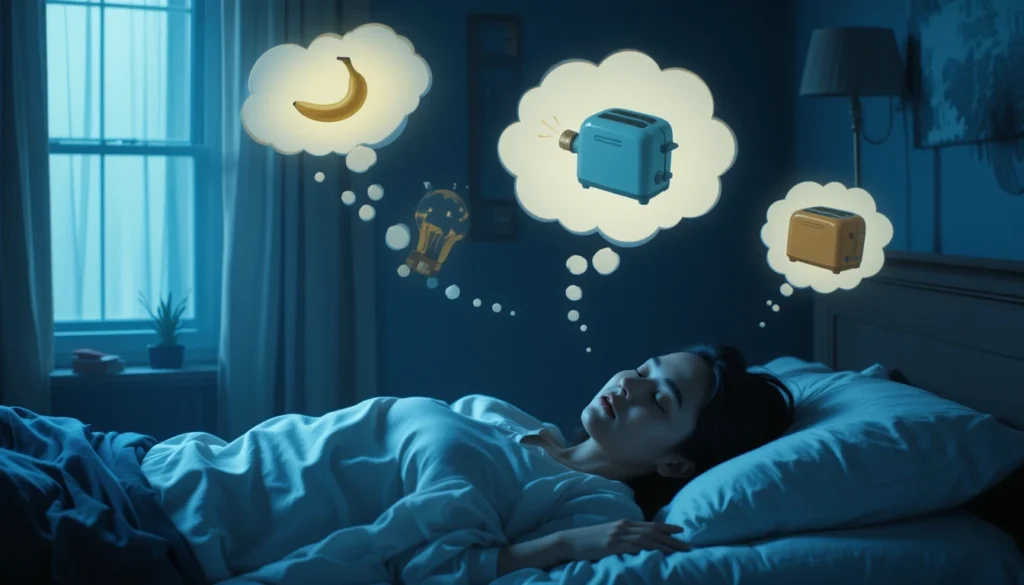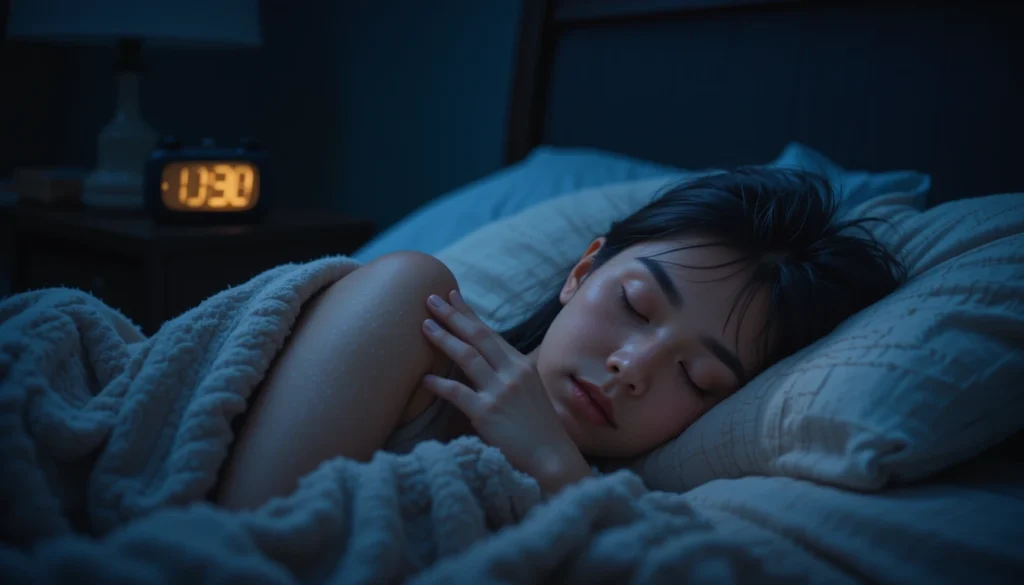Introduction: The Real Struggle of Falling Asleep
How to fall asleep fast is something nearly everyone has Googled at some point. Maybe you’re tossing and turning again tonight, watching the hours slip away, knowing you’ll feel wrecked tomorrow. Whether it’s a racing mind, stress, or just the blue light from your phone, falling asleep has become more difficult than ever in today’s non-stop world.
But what if falling asleep fast didn’t require supplements, sleep apps, or expensive gadgets? What if one weirdly simple mental trick could quiet your brain and help you drift off within minutes? Let’s dive into a method that’s surprising psychologists and changing bedtime routines across the globe.
Why Falling Asleep Fast Matters More Than You Think
Sleep isn’t just about resting—it’s about survival. Chronic lack of sleep affects everything from your mood to your metabolism. According to the CDC, 1 in 3 adults doesn’t get enough sleep, and the consequences go far beyond feeling groggy.
| Consequences of Poor Sleep | Impact on Your Life |
| Increased stress & anxiety | Mental health decline |
| Weight gain | Hormonal imbalances |
| Weak immune system | Frequent illness |
| Poor memory & focus | Reduced productivity |
| Higher risk of heart disease | Long-term health risk |
Falling asleep fast doesn’t just save you time—it saves your sanity, your body, and your peace of mind.
The Trick That’s Got Everyone Talking: The Cognitive Shuffle
You’ve tried counting sheep. You’ve tried deep breathing. You’ve even scrolled through your feed hoping to bore yourself to sleep (spoiler: it never works). But the Cognitive Shuffle offers something different—and it’s weirdly effective.
This trick doesn’t involve tracking your breath or relaxing muscles one by one. Instead, it uses a simple mind game to gently overload your brain with nonsense. And that’s exactly why it works.
What Is the Cognitive Shuffle?
The Cognitive Shuffle involves imagining random, unrelated objects in a loose sequence. It’s like playing word charades in your mind—balloon, toaster, monkey, mailbox, apple…
There’s no storyline, no emotion, and no pressure. Just scattered, silly imagery. The randomness is key: it distracts your brain from meaningful or stressful thoughts and puts it into a sleep-friendly rhythm.
How It Works: The Science Behind Falling Asleep Fast
So, why does imagining a chair and a banana help you sleep?
It all comes down to cognitive overload and mental fatigue. When your brain is overwhelmed with random, non-emotional content, it has nothing to analyze or worry about—no to-do lists, no social awkwardness from 2012. Just harmless noise.
| Concept | Explanation |
| Cognitive Distraction | Prevents your brain from ruminating on real worries. |
| Reduced Sleep Onset Latency | Helps you fall asleep faster by limiting conscious thought. |
| Mental Imagery | Engages the visual parts of the brain, which relaxes problem-solving areas. |
| Low Emotional Involvement | Keeps the mind calm and free of stress triggers. |
Step-by-Step Guide: How to Fall Asleep Fast with the Cognitive Shuffle
Here’s how to try the method tonight:
Step 1: Prepare Your Environment
- Turn off electronics 30 minutes before bed
- Dim the lights or use warm lighting
- Lie down in a comfortable position
- Make sure the room is quiet and cool (ideally 18–20°C)
Step 2: Pick a Random Word
Choose a simple 3-letter word like CAT or BED. Now, for each letter, think of several unrelated nouns that start with that letter.
Example using CAT:
- C: Candle, car, cookie
- A: Apple, anchor, ant
- T: Table, tiger, teacup
Step 3: Visualize Each Object
Picture each item clearly, but don’t connect them. Imagine them floating in space or appearing briefly on a screen. When you run out of ideas or lose focus—perfect. That means sleep is taking over.

More Methods That Help You Fall Asleep Fast
Want to explore a few alternatives? These methods also promote fast sleep—especially when combined with the Cognitive Shuffle.
1. The Military Sleep Method
A favorite of soldiers in combat zones:
- Relax your face completely
- Drop your shoulders and arms
- Exhale and relax your chest
- Visualize lying in a canoe or floating in the dark
2. 4-7-8 Breathing Technique
This breathing pattern slows your heart rate:
- Inhale for 4 seconds
- Hold for 7 seconds
- Exhale for 8 seconds
Repeat for 4 cycles. It reduces stress hormones and prepares the body for rest.
3. Visualization Meditation
Imagine peaceful, immersive scenes like walking on a beach or through a forest. Engage your senses—feel the breeze, hear the leaves crunch, smell the ocean air.

Benefits of Falling Asleep Fast
Quick sleep onset has more benefits than just extra rest:
| Benefit | Why It Matters |
| More REM sleep | Boosts memory and learning |
| Reduced stress | Less time for anxious thoughts to spiral |
| Better mood | Increases serotonin and emotional regulation |
| Improved skin and healing | More time for cellular repair |
| More energy next day | Greater productivity and performance |
How to Use the Trick in Real Life
You can use the Cognitive Shuffle:
- At home: in your bed, every night
- While traveling: in unfamiliar hotels or planes
- During naps: for quick midday rest
- Without tools: no apps, headphones, or lighting required
It’s perfect for overthinkers, light sleepers, and people sensitive to typical mindfulness methods.
Common Mistakes That Prevent Sleep
If you’re doing everything “right” but still can’t sleep, check for these issues:
| Mistake | Why It’s a Problem |
| Checking the time repeatedly | Reinforces anxiety |
| Bright screens before bed | Suppresses melatonin |
| Over-caffeination | Lasts up to 8 hours in your system |
| Too much light/noise | Keeps brain alert |
| Trying too hard to sleep | Builds pressure and frustration |
How to Create a Sleep-Optimized Routine
Falling asleep fast is easier with a calming nighttime ritual. Here’s an ideal routine:
- 2 hours before bed – Avoid caffeine and heavy meals
- 1 hour before bed – Dim lights and power down screens
- 30 mins before bed – Take a warm shower or do light stretching
- At bedtime – Use the Cognitive Shuffle or breathing techniques
Ideal Bedroom Setup for Faster Sleep
Treat your bedroom like a sleep sanctuary:
| Feature | Ideal Setting |
| Temperature | 18–20°C (65–68°F) |
| Lighting | Complete darkness or blackout curtains |
| Sound | White noise or complete silence |
| Bed | Supportive mattress and pillows |
| Ambience | Calm colors, minimal clutter |
When to See a Sleep Professional
Mental tricks are powerful, but they’re not a cure for deeper issues. Seek help if:
- You’ve had poor sleep for over 3 months
- Sleep problems affect your work or health
- You suspect sleep apnea, PTSD, or chronic anxiety
Professional evaluation can uncover medical causes that mental techniques alone won’t solve.
FAQs About How to Fall Asleep Fast
1. Does the Cognitive Shuffle work for everyone?
It works best for people with busy or anxious minds. It might not cure insomnia but can greatly reduce how long you lie awake.
2. Can children use this trick?
Yes! Kids often enjoy the playful nature of imagining random objects.
3. How long should I do the shuffle before it works?
Most people notice effects within 5–15 minutes. If not, switch the word and try again.
4. Can I combine this with breathing techniques?
Absolutely. Many people find the best results when combining it with 4-7-8 breathing.
5. Is this better than taking sleep pills?
It’s natural and has no side effects, but if you’re on medication, consult your doctor before making changes.
Conclusion: Sleep Doesn’t Have to Be a Struggle
Learning how to fall asleep fast isn’t about forcing rest—it’s about letting go. The Cognitive Shuffle gives your mind a gentle distraction, guiding it away from stress and into sleep. No rituals, no pressure, no waiting. Just simple, science-backed sleep.
Try it tonight. You might just be dreaming before you even notice.
The Anxiety App That Rewired My Brain: My Journey from Panic to Peace



